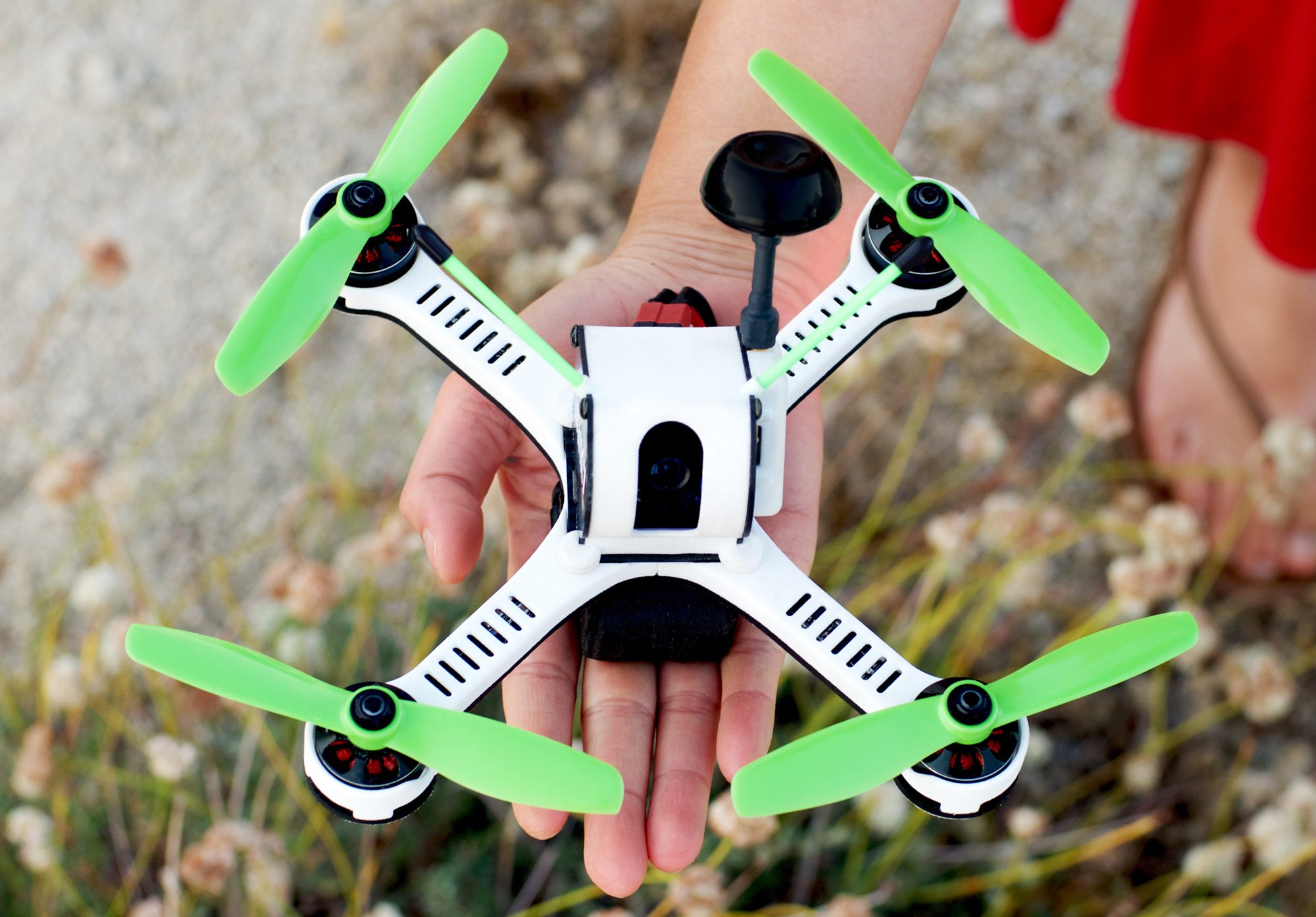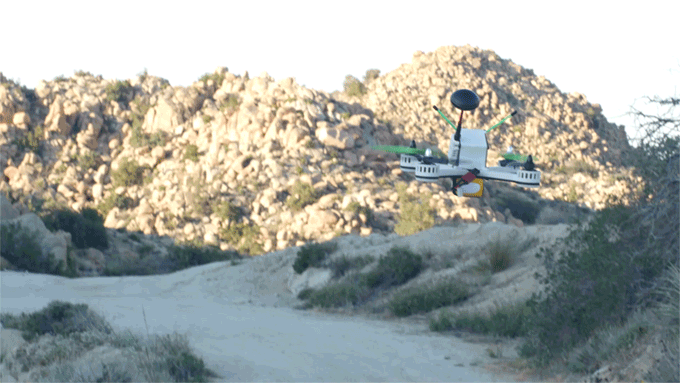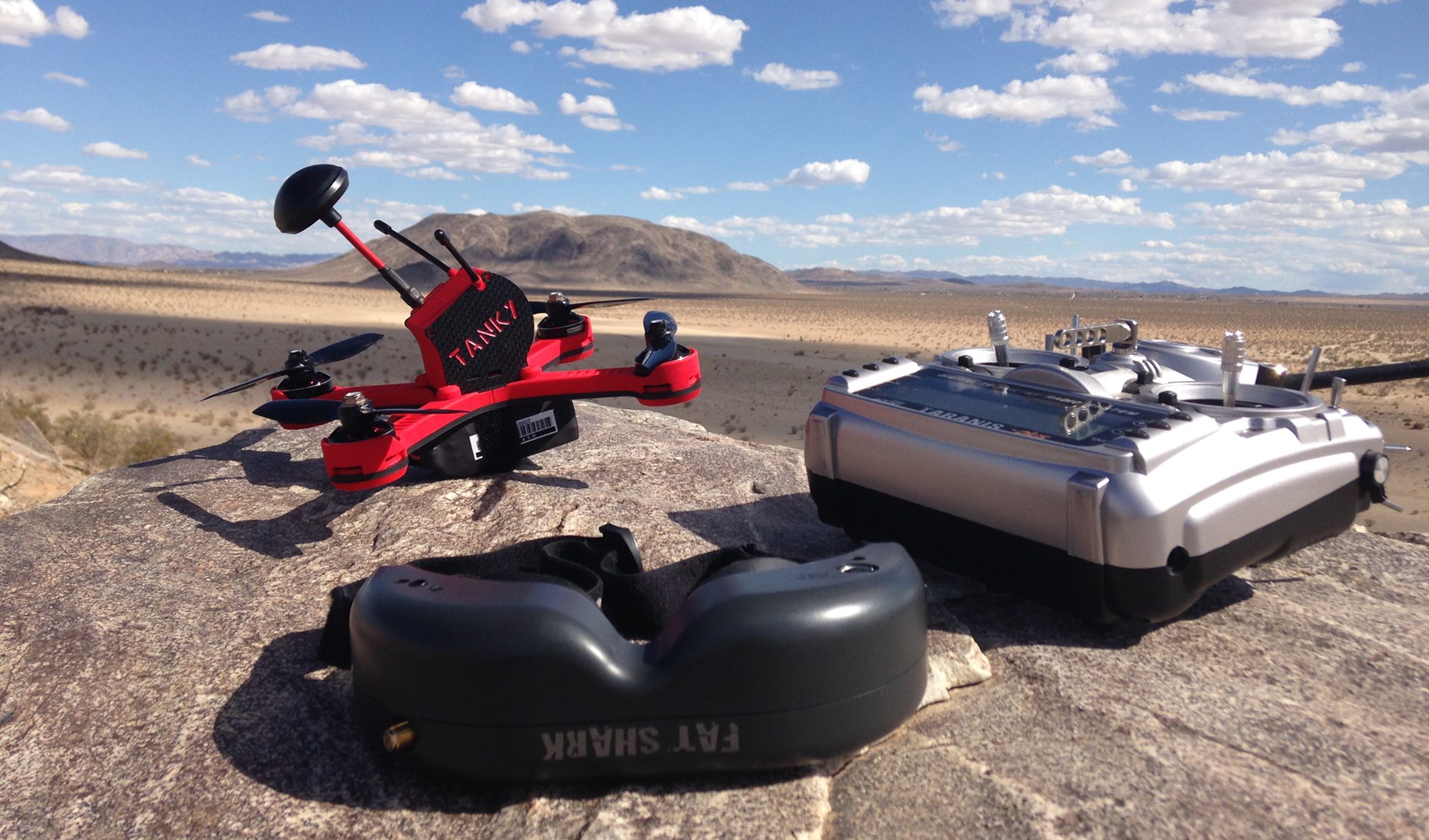There’s a new drone startup making waves in the world of crowdfunding, and this time, it looks like speed is the top priority. California-based Tanky Drone has launched a crowdfunding campaign to bring its FPV racer to the wider public, which comes ready to fly and has, in testing at least, hit speeds in excess of 100 mph.

Tanky has topped 100mph in testing.
Aside from sheer speed, there are a few nice touches that make Tanky an appealing prospect for newcomers to the drone racing scene. The first, strangely, is its shape. Because of its X-shaped frame, slim arms, and centralized mass, Tanky hits peak aerodynamic efficiency when it’s pitched forward and flying at extreme speeds .
Second, Tanky’s core components are protected by a composite thermoplastic skin. Crashes are inevitable, and as well as acting as a barrier, the skin can come in various colors to at least make it possible to look good while doing so. Weighing in at 281 grams minus the battery, Tanky’s performance is responsive, nimble, and most importantly, fast.

Though the speed might sound frighteningly professional, the drone has been designed from the ground up to attract newcomers to a sport that can be daunting at first. It comes ready to fly, offering an attractive alternative to pilots more keen on getting behind the controls than DIY.
“While the FPV drone-racing scene is dominated by custom-built race crafts, it should not have to,” said lead designer Bogdan Ryabyshchuk. “Motorsports drivers do not build their own vehicles to compete in races, so those interested in getting into FPV flying and racing, who do not have the time and know-how, should not have to either.”

Speed has been the driving force behind the Tanky project.
Tanky Drone launched its campaign on Kickstarter last week, setting out to raise $225,000 to finish development and produce its first batch of FPV racers. Speaking exclusively with DroneLife, Tanky designer and co-founder Yuki To gave us more detail on the inspiration behind the project, the power of crowdfunding, and what makes Tanky a decent investment for drone enthusiasts.
So first up, how did all of this come about? Yuki explained that, back in 2014, her and Bogdan had moved from San Diego to an off-grid house in Southern California’s High Desert. The road to the new house, literally and figuratively, meant that high-speed bikes and a Corvette had to make way for something more practical. “Naturally”, she said, “we needed a replacement hobby, so we got into FPV flying”.

Blink and you’ll miss it…
With plenty of practice under their belts in rugged terrain that is as demanding as it is dangerous, the two began designing the concept of a drone with a detachable head and a tiltable FPV camera. It also needed to be able to take a hit. “You know how it is,” said Yuki. “You get preoccupied with something and keep polishing it until something really cool emerges. Then finally we had the drone we always wanted: Fast, sleek, wire and clutter free, and damn fast. We 3D printed all the parts for Tanky on Shapeways, because they can 3D print out of nylon, which makes the prints incredibly tough by comparison with normal consumer 3D printers.”

Tanky was perfected in the desert.
Although bulk orders will require a slightly different technique than the original prototypes. “To make Tanky a reality, we want to make injection molded parts, which means huge upfront costs. So we decided to try doing a Kickstarter to raise the money.”
Clearly, a key part of this drone’s appeal is that it can be flown straight out of the box, and avoids some of the technical skills required in putting together your own custom racer. But there’s more to it than that. “We didn’t just want to make a Ready-to-Fly drone, we wanted to make an RTF drone that even the pro racers would love to fly,” said Yuki.
“Tanky is a race drone, but with a lot of creature comforts, such as On Screen Display, an external camera tuning port, a tiltable camera, and an elegant design. An elegant design doesn’t make it faster, but it matters. The main difference, however, is SPEED. Tanky is really fast. It will easily keep up with any custom-built race drone. So, with our drone you can go to any racetrack with confidence that the only limiting factor is your own piloting skill. Maybe that’s a downside of Tanky as well – there’s no option to blame the equipment.”
So why crowdfunding? So many startups see it as a great way to break into the market and make a name for themselves. Is it the same with Tanky? “We are looking to crowdfund primarily to help with startup costs,” Yuki explained. “We already developed most of the electronics for Tanky and the mechanical design is done. Generally speaking, if it wasn’t for the injection molded parts, we could just start production and make Tanky right away. The marketing aspect of crowdfunding would help, for sure, but people really like Tanky, and we believe if we were to just start selling it today, it would be very successful. But we do need help with some of the upfront costs, to make Tanky really special.”
If you want to find out more about Tanky, support the campaign or pre-order your own FPV racer, visit the Tanky Kickstarter page today. The complete Ready-to-Fly kit, including a carrying case, is available to backers now for under $500 and is expected to be shipped later this year.

The campaign has got off to a positive start – good luck guys!
Source link
 Unmanned Aerial Vehicle The latest drone news
Unmanned Aerial Vehicle The latest drone news



